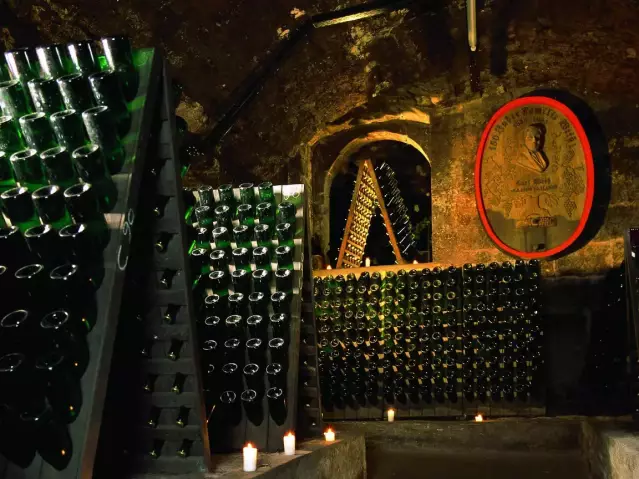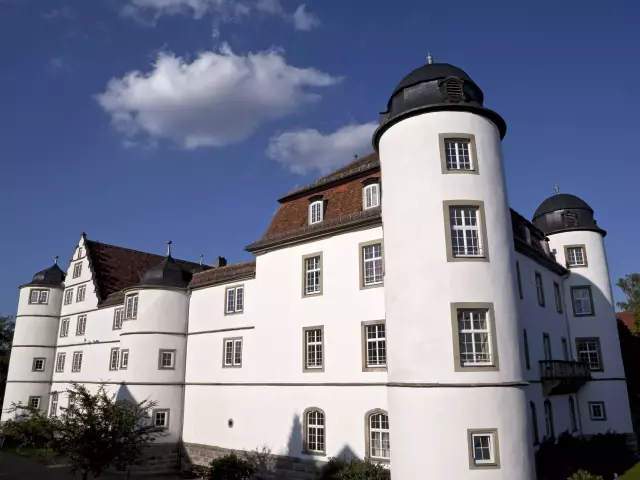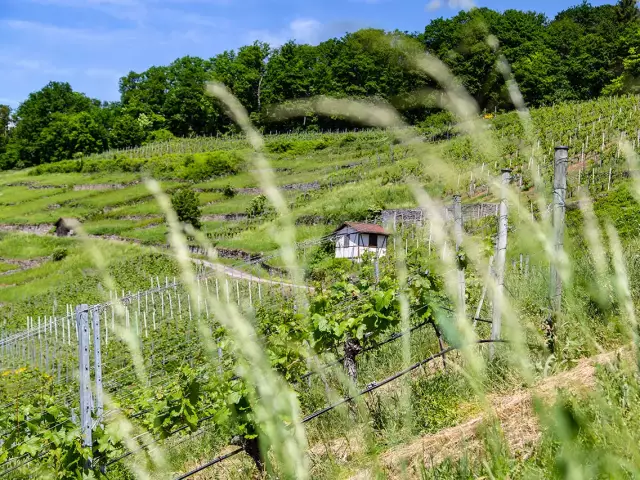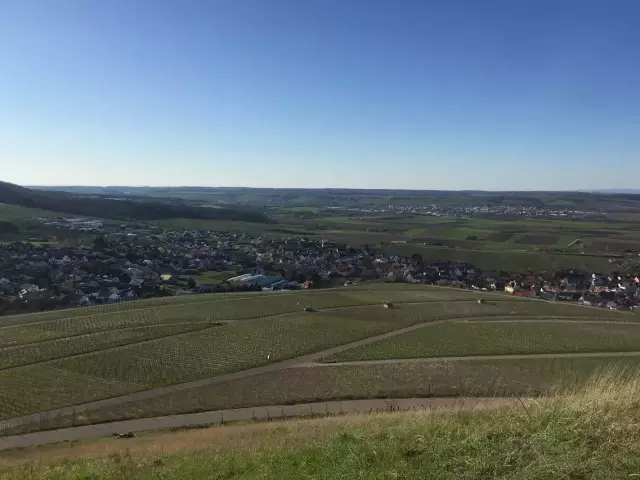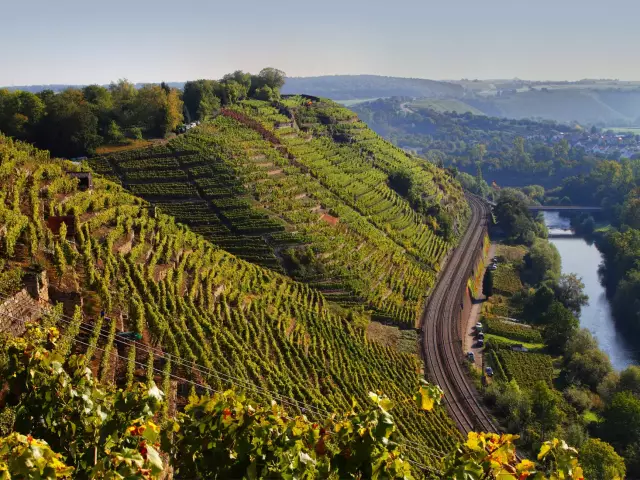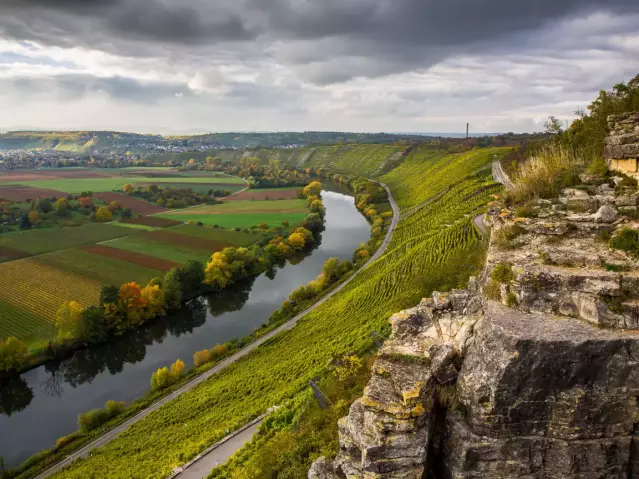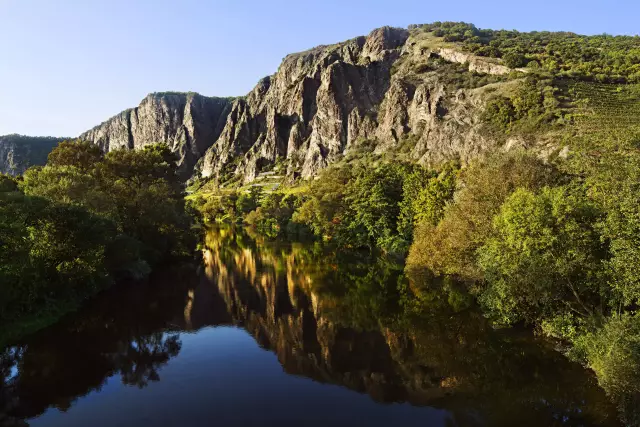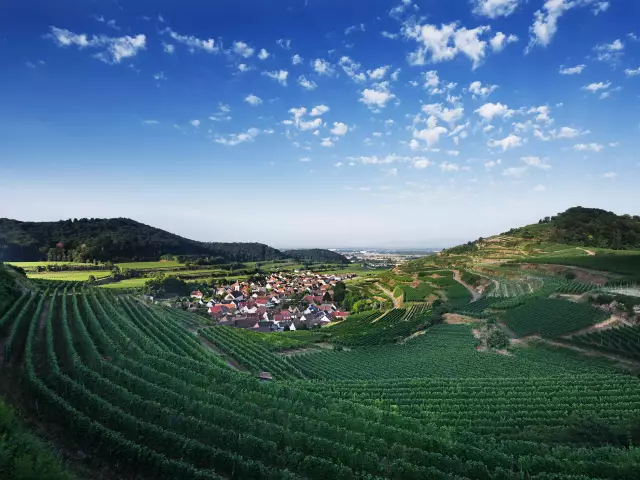Württemberg
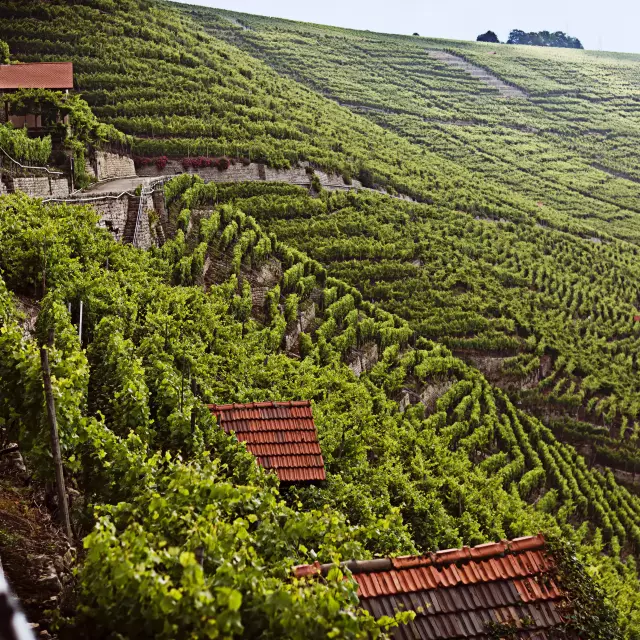
Among the major German wine-growing regions, Württemberg ranks fourth with 11,392 hectares. Here, red grape varieties dominate the vineyards with 65 percent.
Facts
-
11.392 ha
Vineyard area
-
210
single vineyards
-
65 %
red grape varieties
Württemberg - Red Wine Country
Württemberg is known as Germany's premier red wine region. 65 percent of its 11,392 hectares is planted with red grape varieties, the most famous of which is still Trollinger. This quaffable wine, rarely found outside of this region, is called the national drink of Württemberg and is drunk often and with pleasure accompanied by a snack.
As is known, wine consumption in the Ländle (the local name for the region) is significantly higher than elsewhere. Trollinger undoubtedly contributes to this trend, there is even a Trollinger Marathon held in Heilbronn each year. However, this is not the only red wine produced here. In contrast, Schwarzriesling (also known as Müllerrebe or Pinot Meunier), Lemberger and Pinot Noir position themselves primarily as gourmet companions to sophisticated cuisine.
Riesling is the most important white grape in Württemberg, with a similar cultivation area to Trollinger, more than 2000 hectares each. This is followed by Kerner, a crossing of Trollinger and Riesling, bred at the region's oenological research and teaching institute in Weinsberg.
The real specialty of the region is Schiller wine, which unlike other rosé wines, is made from a mixture of red and white grapes that are mixed together prior to fermentation. The name “Schillerwein” has nothing to do with the great Württemberg poet Friedrich Schiller but probably has its origins in the Middle Ages.
Vintners, or vine dressers as they are called here, cultivate vines along the Neckar, as well as in the protected river valleys of its tributaries, the Rems, Enz, Kocher, Jagst and Tauber. The heart of the wine-growing region is the Württembergisches Unterland on the Middle Neckar, to the south of which is the Remstal-Stuttgart area. There is also another small area far to the south near Kressborn and Lindau on Lake Constance.
There are many steep slope vineyards in these valleys and often the sites are terraced and can only be tended by hand. Therefore, there are many part-time winegrowers here, who cultivate small yields which they traditionally deliver to the closest winegrowers' cooperative. There are more than 50 cooperatives in Württemberg which market about 80 percent of the region’s wines.
Large parts of the region can be discovered along the Württemberger Wine Route, which runs for more than 500 kilometers from Weikersheim, near Bad Mergentheim, to Metzingen, east of Tübingen. It leads along the Neckar and its charming side valleys. Another way to experience the local wine in an atmospheric setting where it was grown, is at one of the numerous offerings on Württemberg's wine festival calendar. One of the best known and largest wine festivals is in the wine village of Heilbronn.
Württemberg also sees itself as the land of philosophers and great poets. The first President of the Federal Republic is said to have written his speeches whilst inspired by a glass of Lemberger, and the poets Schiller and Hölderlin also found inspiration amongst the Württemberger. A visit to this region therefore, will inevitably include art and culture, such as a trip to the Schiller National Museum in Marbach, Swabia or the Hornberg Castle of Götz von Berlichingen.
Overview Württemberg
Geographical location: East of the Rhine and Baden, between the Tauber Valley and the foothills of the Swabian Jura. The vineyards are located primarily along the valleys of the Neckar River and its tributaries, the Enz and the Rems, north and east of Stuttgart.
Major towns: Stuttgart, Heilbronn
Climate: Mild temperatures; the hills of the Black Forest and Swabian Jura are protective and the rivers help temper the climate.
Soil types: The soils are varied and include shell-limestone, keuper, marl, loess and clay.
Vineyard area 2022: 11,407 ha · 6 districts · 16 collective vineyard sites · 200+ individual sites
Grape varieties 2022 [white 35% · red 65%]: Trollinger (16.7%), Riesling (18.7%), Lemberger (15.5%), Schwarzriesling (10.5%), Spätburgunder (11.5%) as well as Müller-Thurgau and Kerner
Marketing: Four out of five growers cultivate less than one ha of vines. As such, most are members of cooperatives. The regional cooperative cellars in Möglingen process 80% of an average harvest, including the grapes from 36 local cooperatives. An additional 32 local cooperatives make and market their own wine. Exports play a minor role and indeed, very little wine is sold outside of the region. The local inhabitants are loyal customers.
Signposted routes through wine country: Schwäbische Weinstraße (driving) · Weinstraße Kraichgau-Stromberg (driving) · Radweg Schwäbische Weinstraße (cycling)
Varietals

Highlights of wine culture in Württemberg
-
Highlight Geigersberg: Historical Cultural Wine Landscape Höhepunkte der Weinkultur: Württemberg
Learn more
Winesights
Wine hike Stuttgart Wine Hiking Trail
The best way to get to know the wonderful wine landscapes of Stuttgart is to explore them on the wine hiking trails.
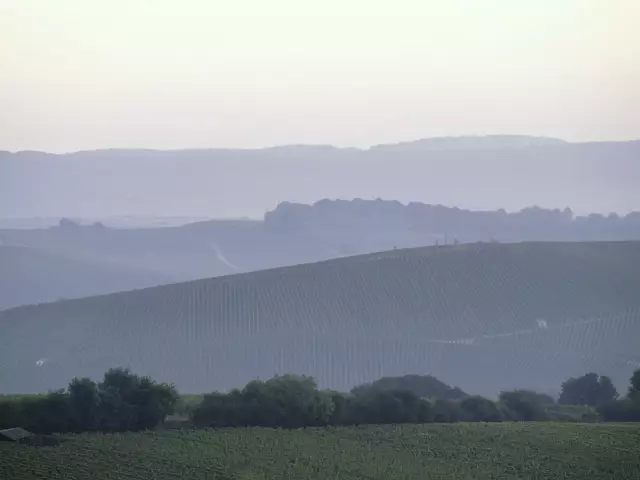
Contact
-
Weinbauverband Württemberg e. V.
74189 Weinsberg- Hirschbergstraße 2 Baden-Württemberg Germany


